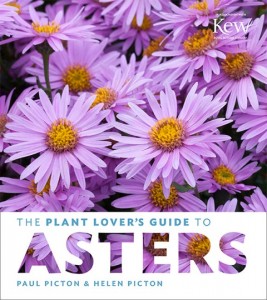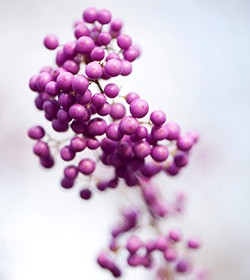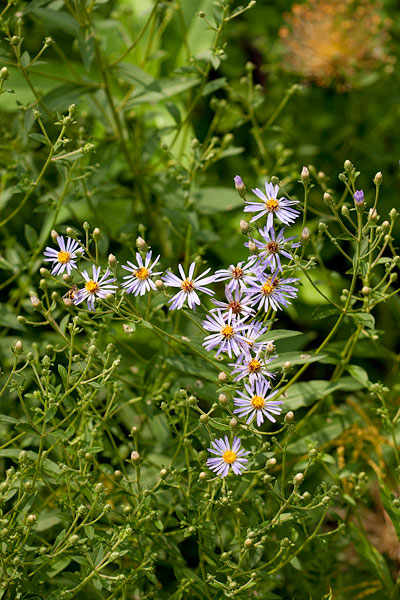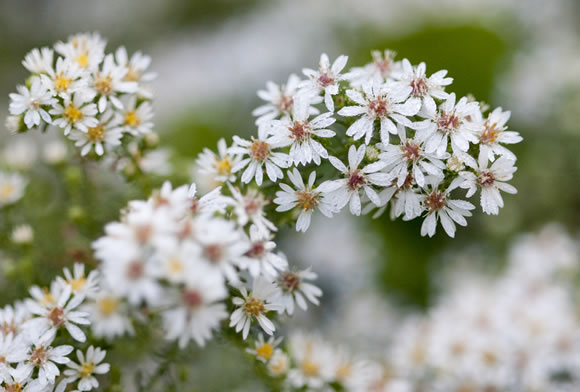Morning Eye Candy: Seasonal Sundries
Posted in Photography on August 18 2015, by Lansing Moore
Hervey’s aster is a familiar favorite among the wildflowers of our region.
Eurybia × herveyi along Seasonal Walk – Photo by Ivo M. Vermeulen

Inside The New York Botanical Garden
Posted in Photography on August 18 2015, by Lansing Moore
Hervey’s aster is a familiar favorite among the wildflowers of our region.
Eurybia × herveyi along Seasonal Walk – Photo by Ivo M. Vermeulen
Posted in Shop/Book Reviews on July 8 2015, by Joyce Newman
Joyce H. Newman is an environmental journalist and teacher. She holds a Certificate in Horticulture from The New York Botanical Garden.
 A new series of photo-driven guides for the home gardener called the Plant Lover’s Guides devotes each lavishly illustrated book to a single popular plant. One of the newest installments in the series focuses on asters. It is written by Paul Picton and his daughter, Helen, specialist growers who operate prize-winning Picton Garden, near Malvern, in Herefordshire, England.
A new series of photo-driven guides for the home gardener called the Plant Lover’s Guides devotes each lavishly illustrated book to a single popular plant. One of the newest installments in the series focuses on asters. It is written by Paul Picton and his daughter, Helen, specialist growers who operate prize-winning Picton Garden, near Malvern, in Herefordshire, England.
The Pictons are passionate experts in the field and their garden holds more than 400 different forms of asters that flower at their peak in the late summer and fall, right up to the frosty winter. Their book, The Plant Lover’s Guide to Asters ($24.95, Timber Press), available at the Shop in the Garden, recommends the best varieties and designs for different growing conditions, along with color combinations that work well, and in-depth advice on planting and maintenance.
Posted in Horticulture on October 16 2014, by Jaime Morin
Jaime Morin is The New York Botanical Garden’s Assistant Curator in horticulture. She works with the plant records and curation teams to help keep the garden’s information on its living collections up to date. She also oversees the details of the garden’s Living Collections Phenology Project.

Autumn is by far my favorite season. I know it doesn’t bring that sigh of relief the first warm day of spring seems to evoke, nor does it allow for long days at the beach or lake. Yet, what it lacks in promised warmth it makes up for in color. As a native New Englander I was brought up with a strong appreciation for bright fall foliage and the joys of falling into a freshly raked pile of leaves. What I didn’t begin to appreciate until I started really looking at plants in my professional life were the bright colors and interesting forms of fruit and seeds that autumn delivers to us. I don’t mean tasty fall favorites like the apple, but the smaller seed carriers that are often missed if you’re not looking for them.
Take a couple of my favorite colorful fruiting shrubs, beautyberry (Callicarpa spp.) and winterberry holly (Ilex verticillata), as examples. Callicarpa have attractive arching branches with demure flowers in early summer, but they shine brightest in fall when dense clusters of vibrant purple fruit cling along the stems creating the late season echo to the pink redbud flowers from spring. Similarly, Ilex verticillata isn’t your typical wall of evergreen holly foliage. By late October this shrub has dropped its foliage and the females are covered with fruit in fiery hues like orange or red.
Posted in Photography on September 22 2014, by Lansing Moore
This monarch butterfly will soon join the rest of his friends in migration to leave the cold northeastern winter. In the meantime, they’re still enjoying our Asteraceae!
In the Home Gardening Center – Photo by Ivo M. Vermeulen
Posted in Photography on September 17 2014, by Lansing Moore
This aptly-named New England aster ‘September Ruby’ lends an accent of fuschia to the Garden’s warm autumn hues.
Symphyotrichum novae-angliae ‘Septemberrubin’ in Seasonal Walk – Photo by Ivo M. Vermeulen
Posted in Photography on July 24 2014, by Lansing Moore

Aster ‘Twilight’ in the Seasonal Walk — Photo by Ivo M. Vermeulen
Posted in Photography on October 17 2013, by Ann Rafalko
Morning dew turns fall asters into jewels in the Native Plant Garden.

Symphyotrichum ericoides forma prostratus ‘Snow Flurry’ (photo by Ivo M. Vermeulen)